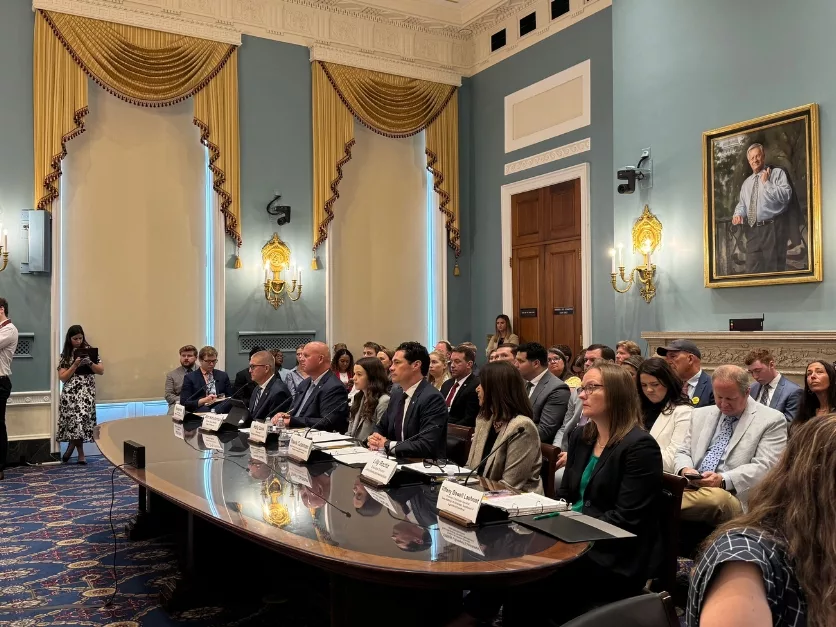Key Takeaways
- Opponents of California’s Proposition 12 express concerns over its impact on pork producers during a recent House Agriculture Committee hearing.
- Legislation introduced by Rep. Ashley Hinson aims to prevent state interference in livestock production, with plans for further action this fall.
- While some farmers support compliance with Prop 12, others warn it could threaten their businesses and raise pork prices.
Concerns Over Proposition 12 and Pork Production
The debate surrounding California’s Proposition 12, which mandates that pork sold in the state must come from sows not raised in gestation crates, intensified during a House Agriculture Committee hearing. Opponents, including witnesses, Republican lawmakers, and one Democrat, voiced urgent concerns for the nation’s pork producers, arguing that the law creates burdensome restrictions.
Representative Ashley Hinson of Iowa introduced a bill prohibiting local and state governments from interfering with livestock production across state lines, reflecting growing frustrations among pork producers. House Agriculture Committee Chair Glenn “GT” Thompson indicated that issues stemming from Prop 12 would be addressed in upcoming farm legislation.
The hearing brought back familiar arguments from the ongoing debate over the measure, which was enacted by voter approval in 2018 and aims for full implementation by 2024. Industry experts and trade associations emphasized that Prop 12 could drive small and mid-sized pork operations out of business, leading to greater industry consolidation and higher prices for consumers. According to National Pork Producers Council economist Holly Cook, California retail prices have already surged by over 20% since the law took effect, with sales volumes declining by double digits.
Two pork producers shared their apprehensions about the future, highlighting the regulatory uncertainty introduced by the law. Ohio farmer Patrick Hord expressed worries about costly updates needed for compliance, noting that existing facilities may require redesign based on changing state standards, further fueling the risk of closure for some producers. Cost estimates for compliance with Prop 12 could range from $3,500 to $4,500 per hog.
However, Rep. Jim McGovern, a Democrat from Massachusetts, criticized these claims as misrepresentations. McGovern asserted that farmers in Iowa are not being forced to abandon crates and insisted that grocery shelves remain stocked. He pointed out that there are numerous producers who support Prop 12, emphasizing the need for a balanced perspective in discussions.
Among those advocating for compliance is Brent Hershey, a Pennsylvania farmer who transitioned his operation to Prop 12 standards, benefiting from increased market access. He argued for the profitability of abiding by consumer demand for ethically sourced pork.
The hearing showcased a clear party-line divide, with limited crossover support. Democrat Rep. Don Davis from North Carolina also expressed strong opposition to the California law, emphasizing the disproportionate impact it may have on states with large pig populations, like his own.
Rep. Zach Nunn, a Republican from Iowa, echoed sentiments that no single state should dictate regulations affecting the entire nation. He is a co-sponsor of the “Save Our Bacon Act,” aimed at countering the legislative impact of Prop 12.
Moving forward, Thompson asserted the importance of listening to producers’ concerns to preserve farmers’ rights in raising animals. Some Democrats acknowledged the complexities introduced by having varying state regulations but also recognized the investments many pork producers have made to meet California’s standards.
The committee’s discussion highlighted the urgency for a solution that balances agricultural integrity with consumer expectations, while navigating the regulatory landscape established by Proposition 12. The outcome remains to be seen as lawmakers seek a path that accommodates both farmers’ livelihoods and consumer demands.
The content above is a summary. For more details, see the source article.















